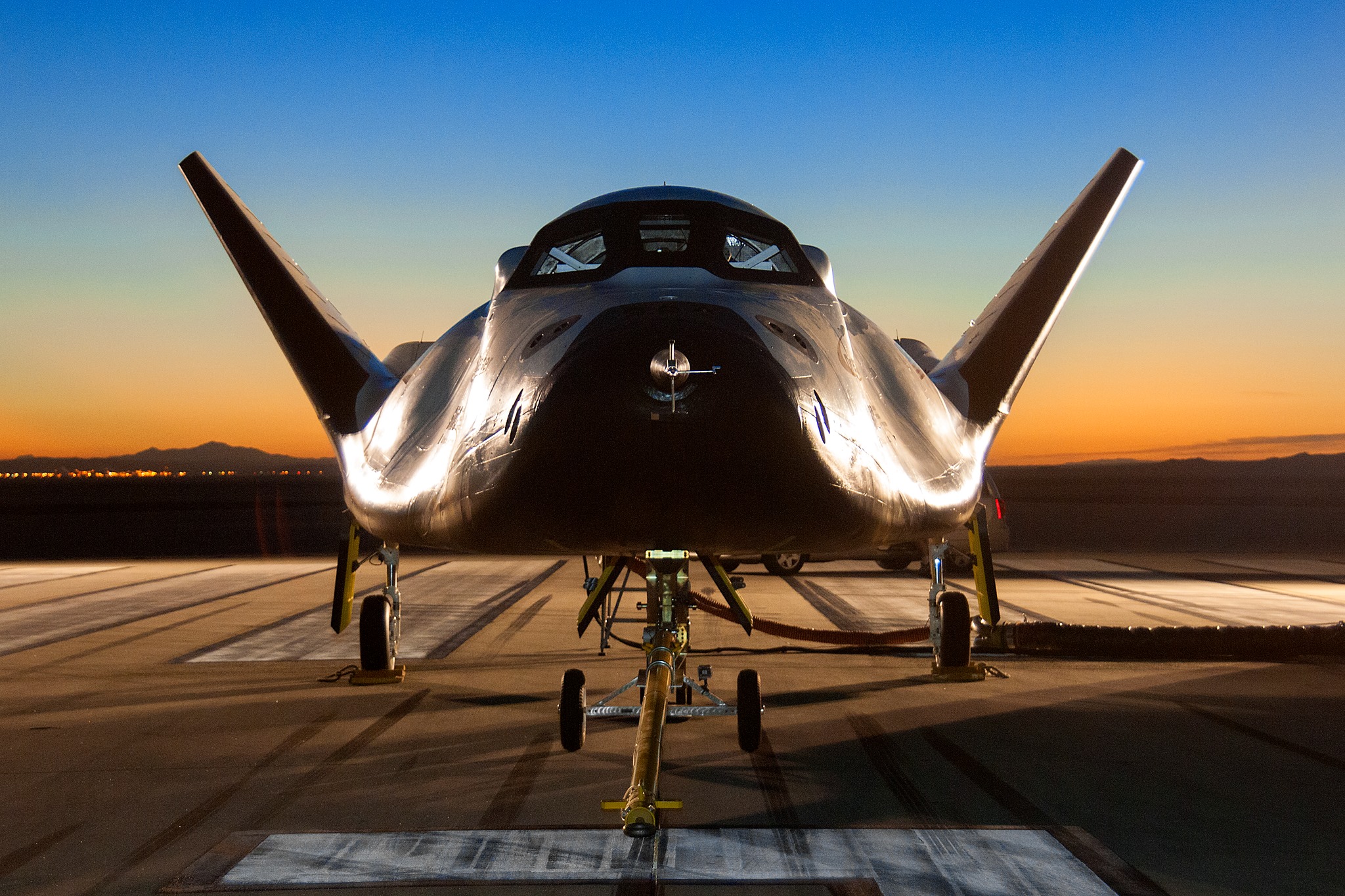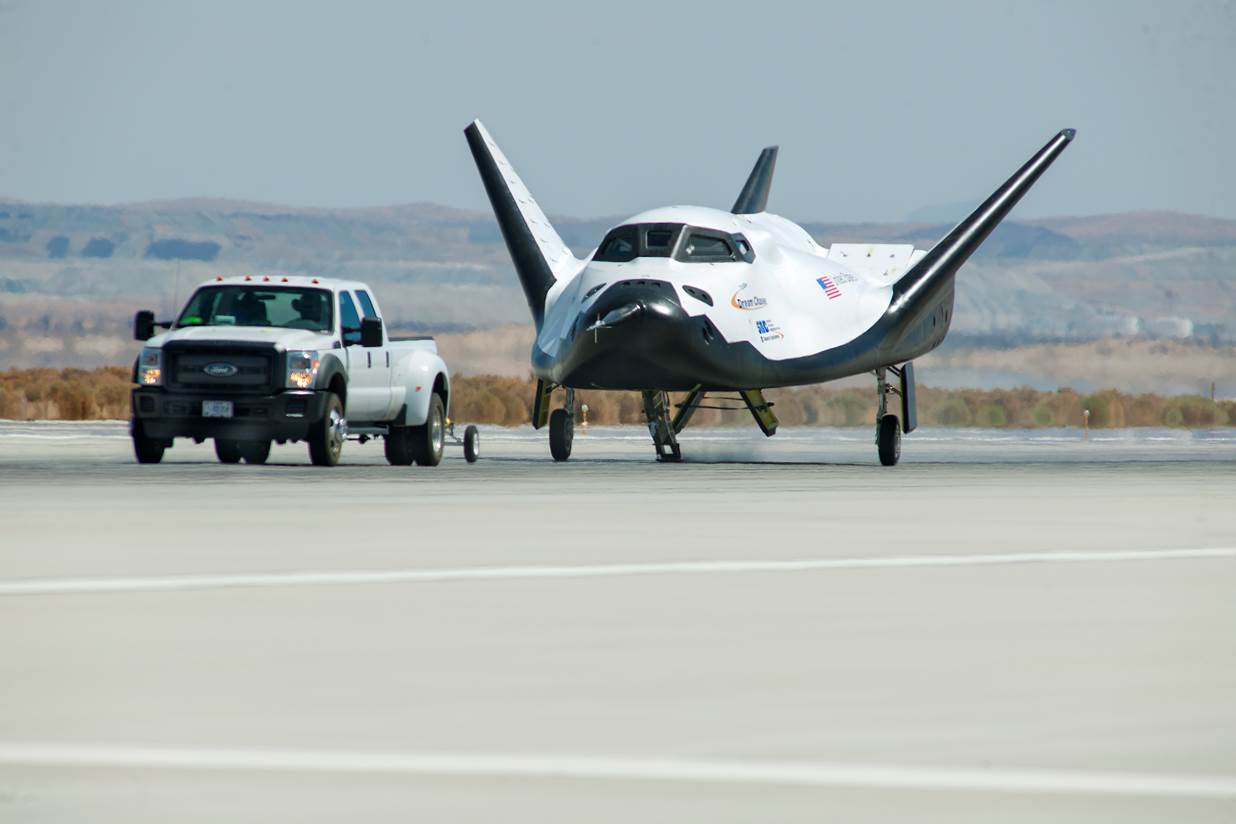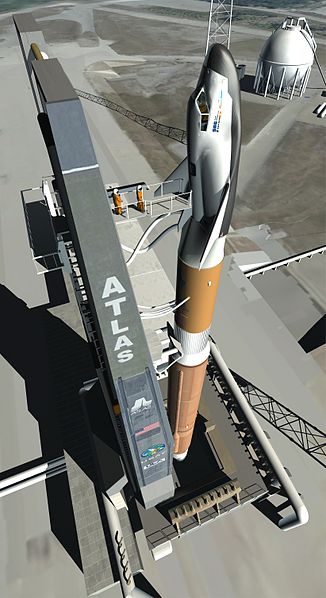
Sierra Nevada Corporation (SNC) reached another milestone this week in its efforts to become the next commercial company to venture into space and provide NASA crew transport capabilities to low-Earth orbit and the International Space Station.
The Dream Chaser spacecraft, described by many simply as a “mini space shuttle,” is ready to begin approach-and-landing (ALT) tests this fall after the flight test vehicle was put through a series of 60-mph ground tow tests on Aug. 2, 2013. The tests, which were performed at NASA’s Dryden Flight Research Center in California, were the fourth in a series of such tests conducted over the past two months to prove Dream Chaser’s braking and landing systems are ready for the upcoming flight tests, which will also take place at Dryden.
Dream Chaser is designed to carry as many as seven astronauts, and it is the only spacecraft under the Commercial Crew Development Round 2 (CCDev2) agreement with NASA’s Commercial Crew Program (CCP) that is winged and designed to land on a conventional runway. It is expected that Dream Chaser will launch on a human-rated United Launch Alliance Atlas-V 402 rocket and return to Earth in much the same way as the space shuttle did. However, unlike the shuttle, Dream Chaser will be able to land on any conventional runway capable of handling commercial air traffic, and the company plans on building a fleet of Dream Chaser vehicles.

“The dedicated Dream Chaser team has been putting the test spacecraft through comprehensive integrated testing on the runway, ramps, and hangar of the historic California site, finding issues on the ground and addressing them in preparation for upcoming free flights,” said Cheryl McPhillips, NASA Partner Manager working with SNC during the agency’s Commercial Crew Integrated Capability (CCiCap) initiative.

Dryden has played host to test flights for decades, and, under a reimbursable Space Act Agreement, Sierra Nevada is utilizing the unique facilities and experienced personnel at Dryden to prove Dream Chaser is safe to fly.
“We are happy to contribute our flight research and testing expertise to this project,” said NASA Dryden center director David McBride. “Dryden has a rich history of testing advances in aerospace technology, from the early lifting body aircraft, through the shuttle program, and now the next generation of manned spacecraft.”
SNC engineers used a pick-up truck to put their Dream Chaser flight test vehicle through several low- and high-speed tow tests on Dryden’s concrete runways at 10, 20, 40, and 60 mph. The tests help verify the integrity of the vehicle and prove it can perform as expected under landing and rollout conditions. Teams also conducted vehicle flight verifications on Dream Chaser’s flight computer and flight software, instrumentation, guidance, navigation and control, and remote commanding capability—among others.
“We are very excited to complete this series of tests and achieve another critical milestone for our Dream Chaser flight test program,” said Steve Lindsey, senior director of programs for SNC’s Space Systems and former NASA astronaut. “Watching Dream Chaser undergo tow testing on the same runway where we landed several space shuttle orbiters brings a great amount of pride to our Dream Chaser team.”
To date, Sierra Nevada has completed all CCDev milestones on schedule and on budget. The company conducted three successful test firings of a single hybrid rocket motor in one day in October 2010. Other important milestones accomplished thus far include a System Requirements Review, a new cockpit simulator, and completion of their functional Vehicle Avionics Integration Laboratory (VAIL), which will be used to test Dream Chaser computers and electronics in simulated space mission scenarios for developmental testing, and later will be used as a key tool for Dream Chaser certification. Wind tunnel testing of a full-scale model Dream Chaser vehicle was completed successfully in late April 2012, which led to a full-scale flight test in Colorado two months later. The separation system compatibility between Dream Chaser and its future Atlas-V rocket launch vehicle has also successfully been evaluated.
Sierra Nevada is one of several companies currently competing to develop commercial crew transportation capabilities in cooperation with NASA, with the goal of achieving safe, reliable, and cost-effective access to and from LEO and the International Space Station (ISS). Eventually, NASA intends on choosing at least two providers to deliver crews to the ISS.
“I look forward to seeing this bird land on the old shuttle runway this fall,” said McPhillips. “SNC and our other partners are working diligently to enable this country to safely fly crew from and back to the U.S.”
[youtube_video]https://www.youtube.com/watch?v=t4oQW_a7XkA&feature=youtube_gdata_player[/youtube_video]
Video courtesy of NASA
Want to keep up-to-date with all things space? Be sure to “Like” AmericaSpace on Facebook and follow us on Twitter:@AmericaSpace




Will Dream Chaser have powered landings on a runway, or will it glide back from orbit as the Shuttle did? Also, is it the same concept as NASA’s HL-20? And I’ve read that Orbital also plans for an HL-20-derived vehicle called Prometheus. Any news about that?
Hi Leo,
Orbital’s space plane, to the best of my knowledge, is no longer under development. As to DC’s capabilities, I believe it’s properties are similar to shuttle.
Sincerely, Jason Rhian – Editor, AmericaSpace
Hi when wil dream chaser have its first test flight .
Graham,
First flight is currently slated to take place in 2015.
Sincerely, Jason Rhian – Editor, AmericaSpace